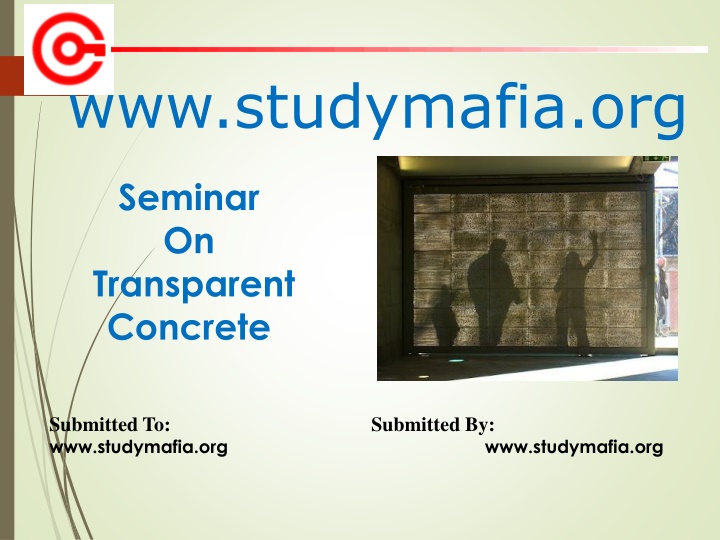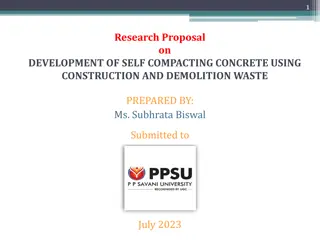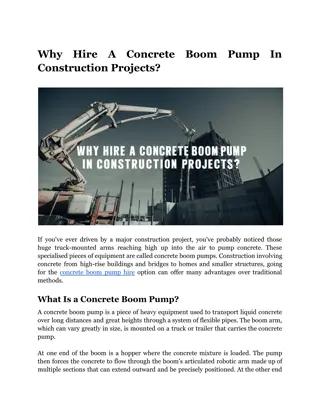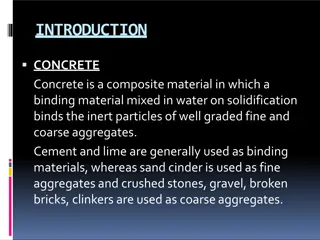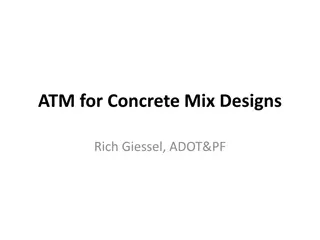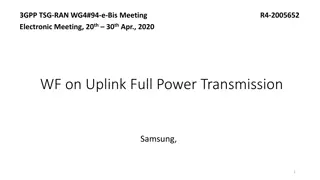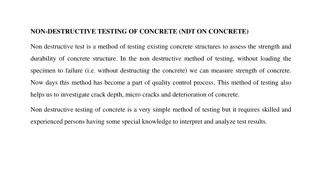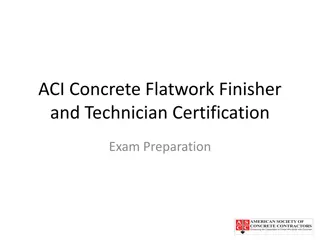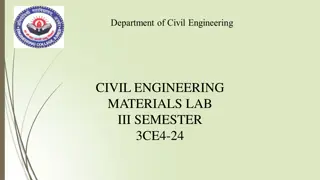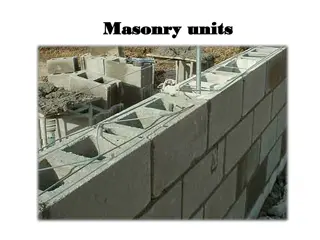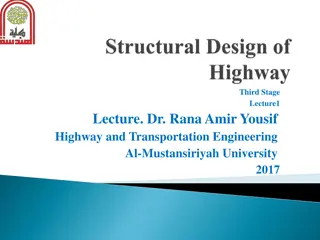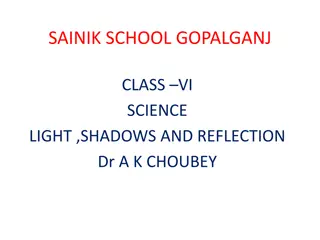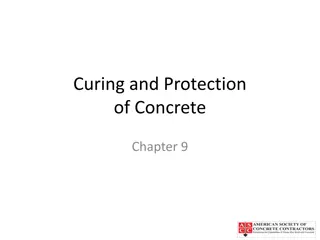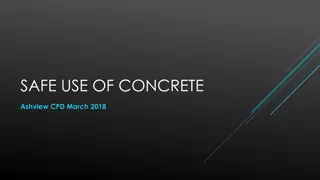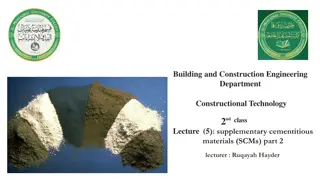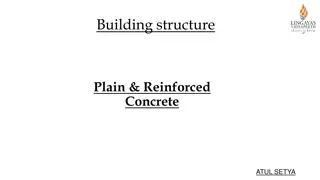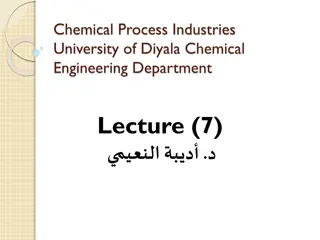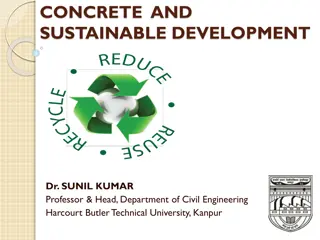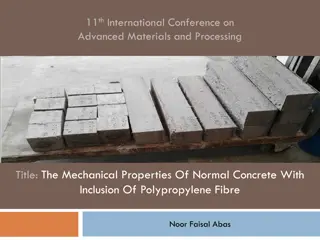Transparent Concrete - Smart Construction Material with Light-Transmitting Properties
Transparent concrete, also known as light-transmitting concrete, is a modern construction material that allows light to pass through. Developed using glass fibers and cement mix, it offers aesthetic benefits and unique properties. Learn about its history, manufacturing process, properties, working principles, and applications.
Uploaded on Apr 19, 2025 | 1 Views
Download Presentation

Please find below an Image/Link to download the presentation.
The content on the website is provided AS IS for your information and personal use only. It may not be sold, licensed, or shared on other websites without obtaining consent from the author.If you encounter any issues during the download, it is possible that the publisher has removed the file from their server.
You are allowed to download the files provided on this website for personal or commercial use, subject to the condition that they are used lawfully. All files are the property of their respective owners.
The content on the website is provided AS IS for your information and personal use only. It may not be sold, licensed, or shared on other websites without obtaining consent from the author.
E N D
Presentation Transcript
www.studymafia.org Seminar On Transparent Concrete Submitted To: www.studymafia.org Submitted By: www.studymafia.org
Content Introduction History How is it Made? What are its Properties? Why does it Work? Is it Expensive? Is it Worth it? Applications Advantages and Disadvantages References
Introduction Transparent concrete or light-transmitting concrete or translucent concrete is a smart construction material that allows pass light through it from one side to another side. Due to some amount of coarse aggregate content of concrete is replace with light- transmitting material or optical fibers. In this concrete, the high amount of fine aggregate is used or fine material is used. Transparent concrete is used to provide a better aesthetic view of a building or other architectural purposes.
History The Transparent Concrete Concept Is First Found In 1935 by Canadian patent. But due to the development of optical fiber and other materials, this concept is not more popular. But after some time this concept also comes and in 2001 the idea of transparent concrete is found by Hungarian architect aron losonczi. In 2004, he started the german company, named LiTraCon, and started producing LiTraCon commercially.
How is it Made? Mostly the same as regular concrete Glass fibers are spread throughout the aggregate and cement mix. Small layers of the concrete are poured on top of each other and infused with the fibers and are then connected Process is tedious and costly Big reason why this product costs so much.
What are its Properties? Carries the same amount of light through a brick no matter how thick it is The light carried maintains its original color Weighs about the same as conventional concrete 96% traditional aggregate and cement, 4% glass fibers Can be manufactured in any color upon request Normally sold in bricks
Why does it Work? Based on Nano-Optics Light passes as much light when tiny slits are placed directly on top of each other as when they are staggered Principal can carry because glass fibers in the concrete act like the slits and carry the light across
Is it Expensive? Currently more expensive Due to: tedious manufacturing process only made in a small factory in Hungary run by inventor Aron Losonsczi Possible production tradeoff to United States or Japan Maybe less expensive in future
Is it Worth it? Depends on the buyer and the project Adds an interesting property to a strong material Could take fiber optics in a new direction Definitely looks cool nonetheless
Application:- For decorative elevation. Illuminate wall. Get creative with a design. Use in a pavement or load-bearing walls. Increase visibility in a dark subway station. Light fixture. Use as transparent and decorative floors. Light sidewalk at night. In furniture for aesthetic view.
Advantages It has very good architectural properties for giving the good aesthetical view to the building. Where light is not able to come properly at that place transparent concrete can be used. The main advantage of these products is that on large scale objects the texture is still visible while the texture of finer translucent concrete becomes indistinct at distance. Energy saving can be done by the utilization of transparent concrete in building.
Disadvantages Casting of transparent concrete block is difficult for the labor so a special skilled person is required. The main disadvantage is this concrete is very costly because of the optical fibers.
Future of Transparent Concrete Many experts have predicted that translucent concrete can bring about a positive change in the overall market and become an economical and eco-friendly alternative to traditional concrete. As a result, manufacturers are now working hard to develop translucent concrete at a lower cost, so it can become an affordable alternative for both commercial and residential projects.
REFERENCES www.google.com www.wikipedia.com www.studymafia.org
